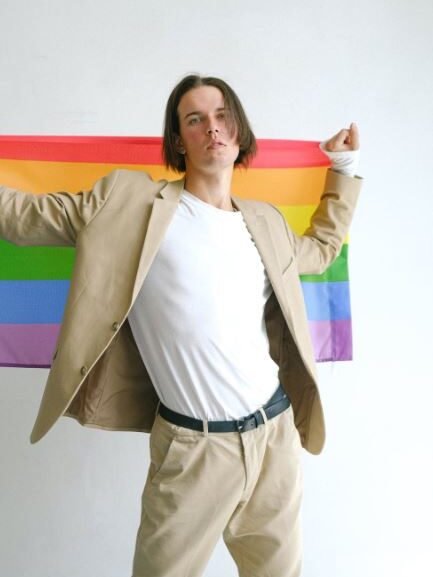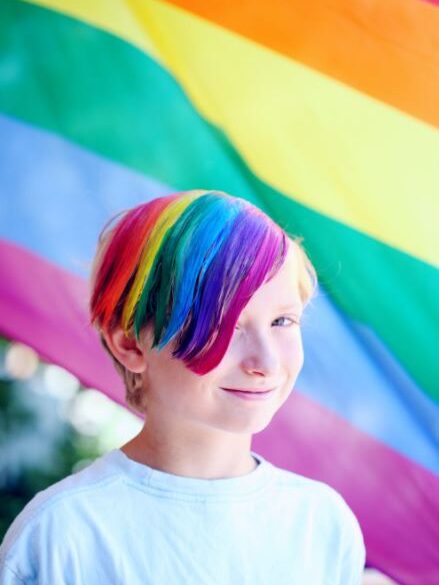
What is queer and are you one?
A lot of the articles in My Transgender Date revolve around the life of transgender women and the men they date. However, transgender individuals are still part of the LGBTQIA community and it’s only fitting to introduce one of the spectrums to My Transgender Date’s audience.
Today, you’re going to learn about the term queer, its definition, and everything encompassing. Please know that this guide wasn’t created to offend a group of people. This was made for educational purposes only.
On this page
What does queer mean?
The word describes a lot of LGBT people who don’t want to be associated with the words straight and cisgender.
- lesbian
- bisexual
- gay
- and transgender individuals may refer to themselves as queer

It may also be used by people who have a more complicated identity when it comes to their s*xuality or gender. Especially young people who find the term like:
- trans
- gay
- lesbian
- etc., too “final” for the stage of their life
They’re the ones who may change their position in the spectrum from time to time. It’s not as if they’re undecided of their identity but a shift in s*xuality and gender is sometimes inevitable and it’s not something out of the norm.
Are transgender and queer the same?
A trans person can be transgender but identifies as queer at the same time. However, both words are not synonymous.

For example, a transgender woman may identify as a heterosexual woman. While the other chooses to be queer because she’s not straight or she just doesn’t like associating herself with the common s*xual orientations.
Are they pansexuals?
This gets more confusing because both spectrums can cross each others’ paths from time to time. Pansexuals are people who are s*xually attracted to everyone no matter the s*xual orientation, male or female, or gender expressions.

However, not all queers are open to having s*x with anyone. As mentioned before, there’s a chance that their s*xual identities or gender identities may undergo a shift from time to time.
Who can you call queer then?
Queer has a sad history because it was used as a derogatory term towards people with an alternative s*xual orientation. However, today, the word is proudly worn as a badge by a lot of people in the LGBTQIA (lesbian gay bisexual transgender queer intersexed asexual) community.
If you’re not part of the community, please don’t use this word. Added to that, just because you’re part of the LGBTQ community, it doesn’t give you the right to call anyone queer without asking for their permission first.
Don’t use the word loosely if you don’t want to offend anyone.
Am i queer?
If you strongly believe that you’re not a cisgender person and you’re not heterosexual, you may be one of the queer people.

If you feel that you don’t fit the other spectrums of the LGBTQIA community, you may refer to yourself as one.
Is it hard to find a relationship if I’m queer?
Being one is not a hindrance to finding love. Yes, there are transgender women who only prefer to be with heterosexual cisgender men. But this doesn’t mean that there’s no trans woman out there for you. Emotional attraction doesn’t see labels, orientations, and identities.

If you truly believe that you’re capable of giving and receiving love, your spectrum in the LGBTQIA doesn’t matter.
Why does the majority find it hard to understand queer’s definition?
Just like the gender non-conformist, it has spectrums under it. Both are not as easy to define as:
- lesbian
- gay
- bisexual
- pansexual
- and transgender
For you to cut the explanation short, you can simply say that you don’t find yourself to be either cisgender or straight.

Doing so will close the doors for further questions (unless the person you’re talking to keeps pushing your buttons).
Do they experience discrimination too?
Everyone in the LGBTQIA community experiences discrimination.
Just the mere mention of an alternative s*xual orientation may ruffle some feathers.

Being one doesn’t give you a pass because it’s an umbrella term. In reality, queers get a lot of flak because some people don’t believe that queers are labeled “correctly”.
A lot of people think that gender identities and s*xual orientations are black and white.
What they fail to realize is both categories can be divided into subcategories, hence the rainbow flag of the LGBT community.
Other spectrums of the LGBTQIA community
For you to have a better understanding of how to differentiate it from other spectrums, listed below are the other spectrums and their definitions.
Lesbian
Lesbians are women (cisgender or transgender) who are s*xually attracted to women. The majority of them exclusively date and sleep with women. There are many types of lesbians. Some of them are lipstick lesbians (women who dress up in a feminine way), butch lesbians (women who dress in a more masculine way), and the one in between.

Lesbians also sometimes call themselves gay but since we’re talking about the LGBTQIA spectrum, let’s move on to the meaning of G in the acronym.
Gay (Gay Men)
Gays are men (cisgender or transgender) who are s*xually gravitated towards men.
The majority of them only date and have s*x with men.

Gays dress up differently. Some of them dress up and act in a very masculine way while others are called effeminate.
Effeminates are the ones who still look like men but act and dress up with a feminine touch.
Bisexuals
Bisexuals can either be transgender or cisgender. They’re attracted to both men and women. The way they dress up and act is more varied because they represent all gender identities. Bisexuality is more on the section of sexual orientation rather than gender identity.

However, they’re only attracted to men and women and not other genders that gender non-conformists and queers identify with. Some of them even only prefer cisgender people and they’re not attracted to transgender individuals.
Transgender
Transgender people are the ones who transition to the opposite gender that they’ve been assigned at birth.

They dress up, talk, and act like the gender that they identify with and it’s mostly either a man or a woman.
Intersex
Intersexed people are the ones who are born with conditions regarding their reproductive system or anatomy. For example, an individual might be born appearing to be female on the outside, but having mostly male-typical anatomy on the inside.

This has more to do with their “unusual” genetic condition. The reason why they’re included in the rainbow is that they’re often misunderstood and harassed for being born the way they are.
Asexual
Asexual people are not attracted to anyone s*xually. They may still feel attracted to a person emotionally, but never in a s*xual way.
Now that you’re aware of the other spectrums, you’ll be able to easily differentiate as to why queer isn’t synonymous with any of them. Did you learn anything from this What is Queer and Are you One guide? If so, please share it on your timeline.



